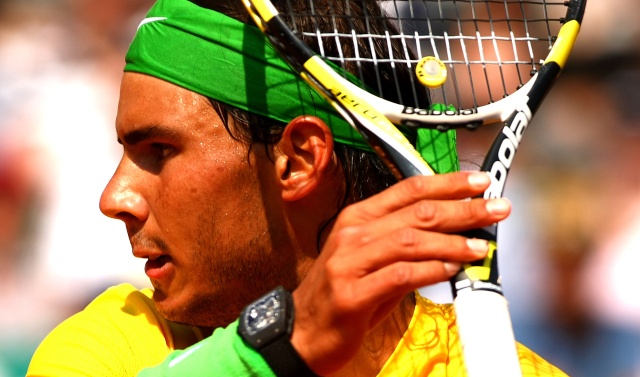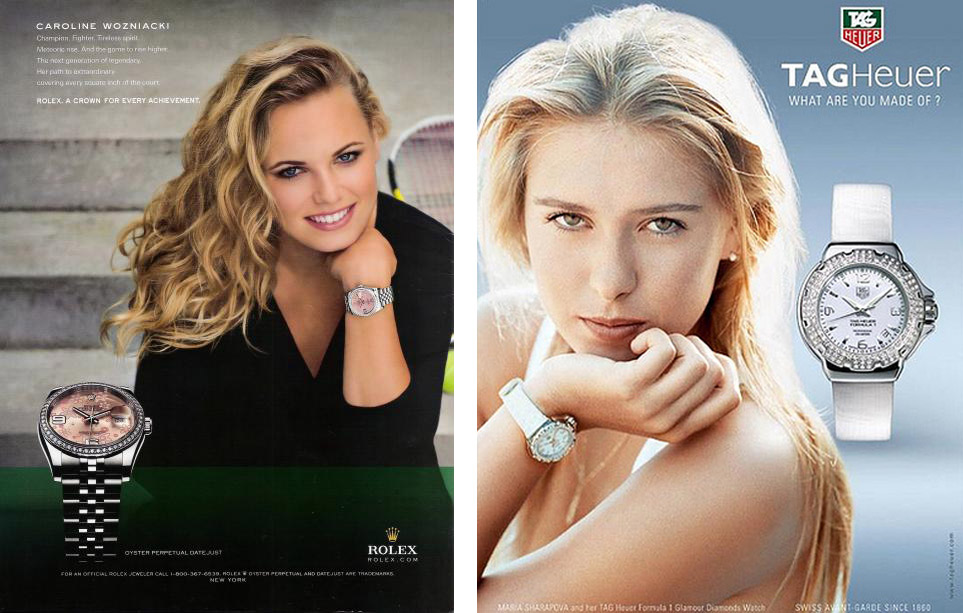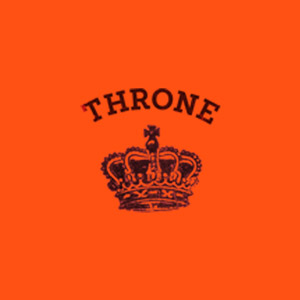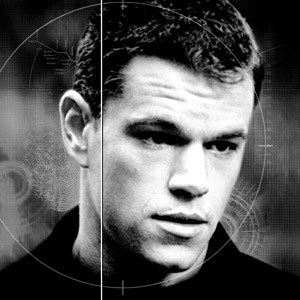Roger Federer sat down after winning the 2012 Wimbledon Championships and did two things – slipped on a natty, vintage-inspired tennis sweater from Nike and a who-knows-how-much-it-costs Rolex watch…
To say that tennis and timepieces are linked is to state the obvious. To explore the reasons for that connection is twofold: tennis relies on timekeeping as a function of the sport and watch companies smartly align themselves with tennis because of the precision, style, and grace the sports’ athletes convey each time they hit the court.
Timekeeping & Those Crazy Scores
From a practical standpoint, there isn’t a lot a watch can do for you on the tennis court beyond weighing down your arm. In fact, most of the top players who endorse the luxury brands simply slide a timepiece on once they’ve finished playing – or make sure they’re sufficiently bedecked when making public appearances.
Rafael Nadal can be seen sporting his Richard Mille timepieces while playing, even if the requisite Nike wristbands swaddling much of the Spaniard’s forearms seriously obscure the view of the watch.
No, most of the timekeeping work in today’s tennis world is for effect – large analog and digital clocks by an event sponsor that keep the time of the match being played. It’s a great marketing tool for companies like Rolex, Longines, and Citizen that sponsor the sports’ Grand Slam events. But more on marketing later…
Though there is no need for a player to use his or her watch to time anything during match play, that’s not to say those big clocks serve no purpose. Tennis is a sport with specific time rules, even if they are more like suggestions for the top players.
According to the sport’s official rules, a player is required to serve 20 seconds after the previous point is completed, 90 seconds is given during a side change, and 2 minutes between sets. If you watch tennis on television though, you won’t see a countdown take place to make sure Serena Williams follows these rules to the letter. The umpire monitors these intervals from the chair and, from time to time, will threaten action if a player seems to be taking too long.
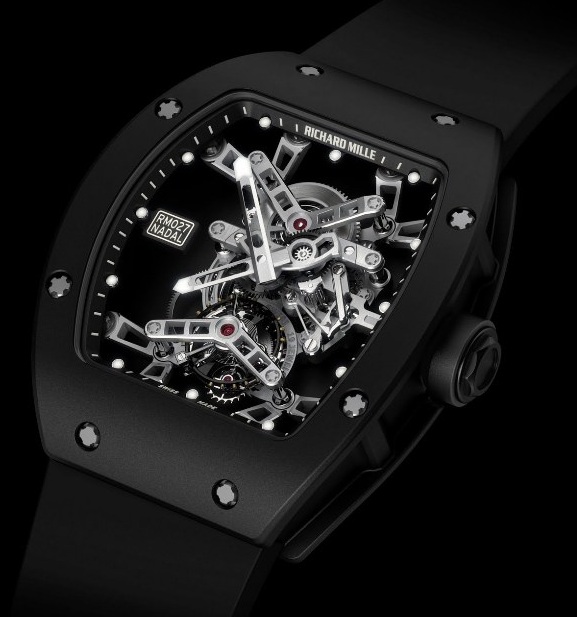 Even though he sports a watch that is north of half a million dollars, Nadal is notorious for testing the timekeeping mettle of chair umpires everywhere with his carefully concocted pre-serve routine. Then again, maybe that expensive watch on his wrist doesn’t have a second hand?!
Even though he sports a watch that is north of half a million dollars, Nadal is notorious for testing the timekeeping mettle of chair umpires everywhere with his carefully concocted pre-serve routine. Then again, maybe that expensive watch on his wrist doesn’t have a second hand?!
Taking too long and impeding the flow of the match might cost a player a point. Speaking of points, how in the world did tennis end up with such an odd scoring system? Though there is debate among historians as to the actual origins of love et al, there’s a good chance clocks were used in the games infancy to track scores courtside.
Both players start with zero – or love – and are awarded points for successful play in increments of 15. Many people believe early scoring arrived at 15 because it was easy to manipulate the hands of large clocks to serve as a visual reference for the score.
If the lovely Dane Caroline Wozniacki hits a winner past Kim Clijisters, Wozniacki is up 15 to love. Early scorers would have moved the hand of a clock to 15 on Wozniacki’s side to reflect her success. From there, the clock hand would move to 30 and finally 40. There are only 10 increments here rather than 15 due to the game’s requirement that a player wins by more than one point.
So, beyond tracking the elapsed time during a match, clocks played an important role in tennis history. They also play an extremely important role in its financial success.
Who Wears What
Marketing is a key aspect of any business and it’s a huge part of the watch industry. Consumers rely heavily on the influence received from commercials, celebrity endorsements, and the print ads they read. For this reason, watch companies have sought for years to align themselves closely with the sport of tennis and its stars.
But why?
If you’re a tennis player or watch the game at all, you’ll understand the natural connection.
Golf is a precision sport – hit the ball a millimeter outside your comfort zone and you’ll be dinging balls off the snack shack of your favorite community course. Tennis has a similarly low tolerance for error. But, unlike golf that is played at a snail’s pace, tennis is extremely quick and physical.
The best players incorporate all of that in their game – but make it look effortless. Federer is in a class by himself in this regard. His footwork is mesmerizing, his shot-making ridiculously precise, there is great power with minimal effort, and an almost machine-like focus.
It’s no wonder he’s been heavily sought after to endorse products and services during his record-setting career. It helps, too, that he speaks fantastic English.
Federer has enjoyed a partnership with Rolex for the bulk of his career save a few years where he honored Swiss loyalty and went with Maurice Lacroix. The watch-making titan is also aligned with other top players like the aforementioned Wozniacki and is the official timekeeper of the Australian Open and the game’s seminal event – Wimbledon. During the fortnight in June the All England Club is a veritable ad banner for Rolex.
Russian beauty and recently-dethroned world number one Maria Sharapova endorses Tag Heuer and even contributes to the design end of the timepieces she wears and the company’s line of eyewear.
Even retired players like Andre Agassi still rack up dollars endorsing products. For Agassi and his tennis-legend wife Steffi Graf, it’s Longines watches.
Tennis could easily be seen as the perfect live-action example of a good watch. A top player is often elegantly dressed (save Nadal’s bicep-bearing shirts) and moves smoothly on the surface with a calm confidence. But inside the tennis player, just like a great watch, beats a relentless heart bent on achieving exacting results and guts that require him or her to take their lumps while still appearing flawless.
When it comes to dressing our wrists, the description of the tennis champion seems awfully similar to what we look for in a watch – a graceful appearance and a reliable heart melded from science and substance.
Scoring Watches
Far from the marketing spotlight of such major brands as Rolex, Tag Heuer, Longines and the like is a watch built for the recreational player. Or it was built, at one time.
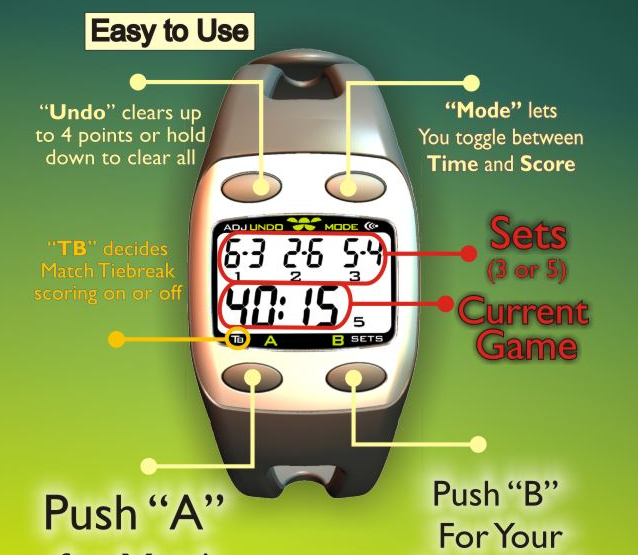 The Winset Tennis Scoring watch was introduced in 2005 as the only watch that would effectively track your score in games, sets, and matches, tell you when to change sides, and even score the tiebreaker for you! It also kept the time, but that almost seems secondary to all the things this watch could do.
The Winset Tennis Scoring watch was introduced in 2005 as the only watch that would effectively track your score in games, sets, and matches, tell you when to change sides, and even score the tiebreaker for you! It also kept the time, but that almost seems secondary to all the things this watch could do.
Problem is, do a search for these watches and they are backordered everywhere you look. The company’s website indicates they no longer produce the watches due to a manufacturing issue and encourage you to contact them if you’d like to buy the business. So, for you independently wealthy, watch-loving tennis players: http://www.winsetsports.com/
Beyond the Winset, all other tennis outfitters simply carry basic sports watches or watches by brands closely associated with the game. Lacoste was born from tennis and remains heavily associated with the sport. They offer several “tennis watches”, but these are merely quartz beaters with the signature crocodile splashed about the dial and band. As for specific tennis functions, they have none.
So, with the death of the Winset, it looks like we’re all back to flipping those metal numbers on the sweltering hard-courts of our hometown recreation centers. Here’s to the hope some other manufacturer picks up the baton on tennis-specific watches.
Until then, it’s Tennis 15, Tennis Timepieces Love.
by JJ McDowell









 Featured Videos
Featured Videos





